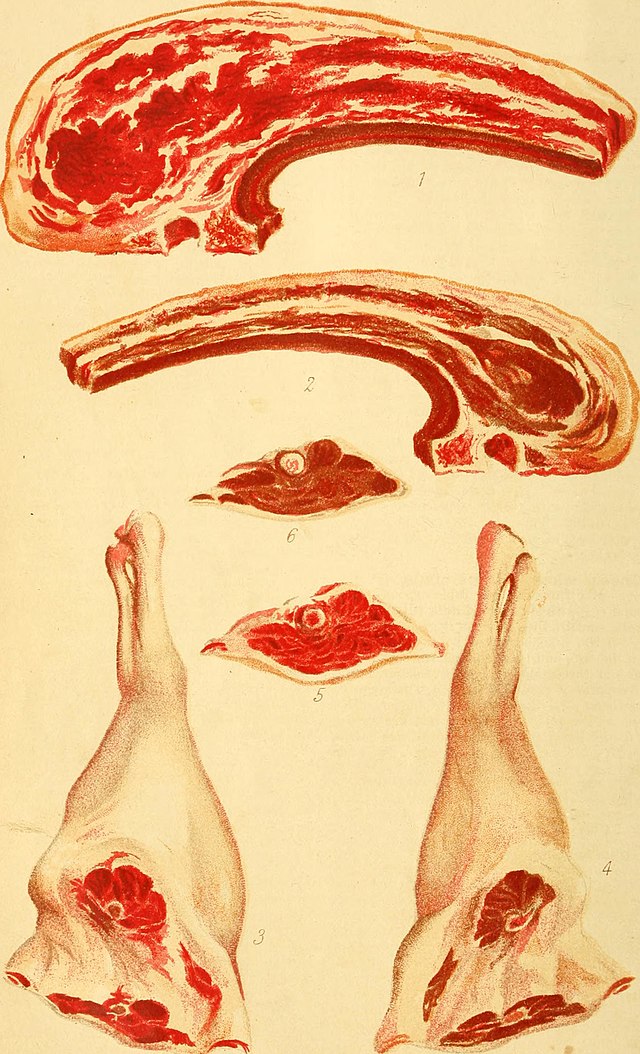A primal cut or cut of meat is a piece of meat initially separated from the carcass of an animal during butchering. Examples of primals include the round, loin, rib, and chuck for beef or the ham, loin, Boston butt, and picnic for pork.

Different countries and cultures make these cuts in different ways, and primal cuts also differ between type of carcass. The British, American and French primal cuts all differ in some respects. For example, rump steak in British and Commonwealth English is commonly called sirloin in American English. British sirloin is called porterhouse by Americans.[1] Another notable example is fatback, which in Europe is an important primal cut of pork, but in North America is regarded as trimmings to be used in sausage or rendered into lard. The primal cuts may be sold complete or cut further.
The distinct term prime cut is sometimes used to describe cuts considered to be of better quality; for example in the US Department of Agriculture meat grading systems, most use prime to indicate top quality.
US primal cuts
National variations
See also
References
External links
Wikiwand in your browser!
Seamless Wikipedia browsing. On steroids.
Every time you click a link to Wikipedia, Wiktionary or Wikiquote in your browser's search results, it will show the modern Wikiwand interface.
Wikiwand extension is a five stars, simple, with minimum permission required to keep your browsing private, safe and transparent.





